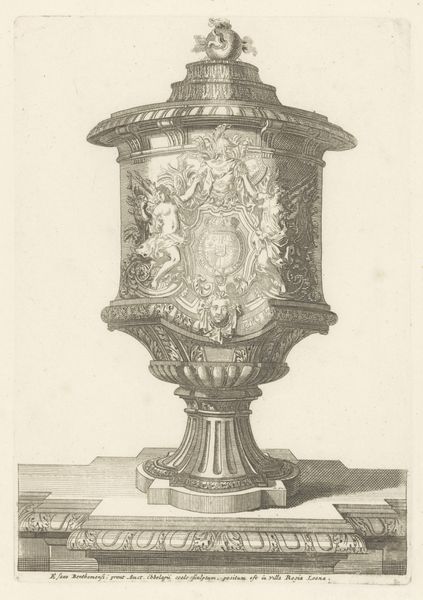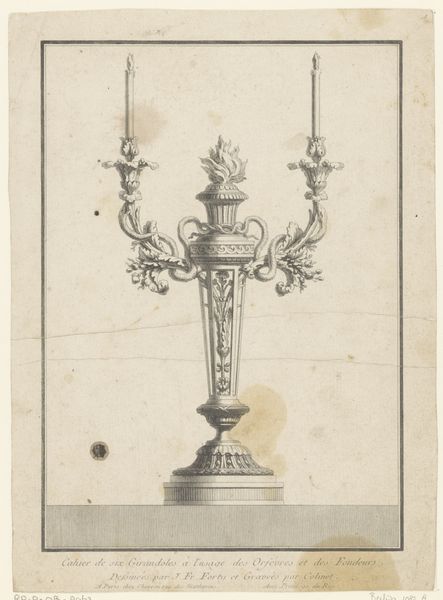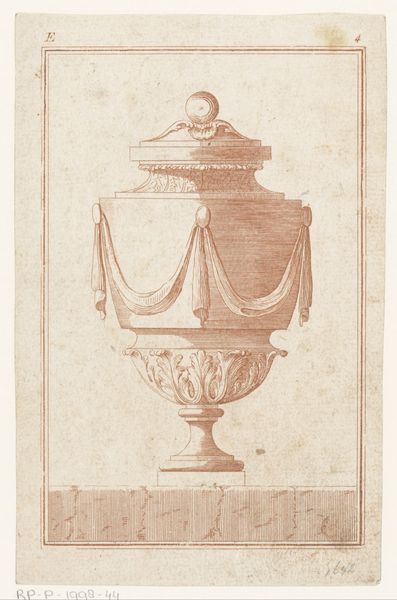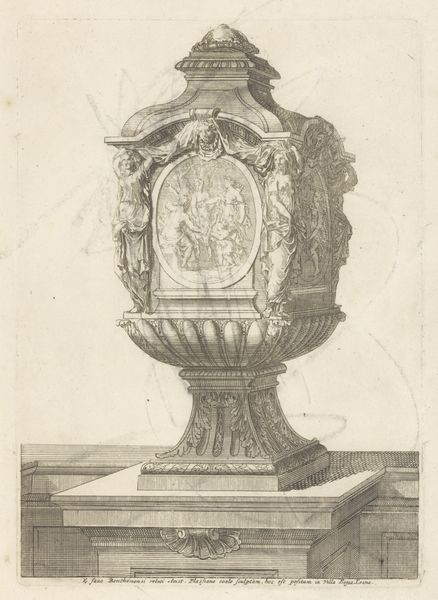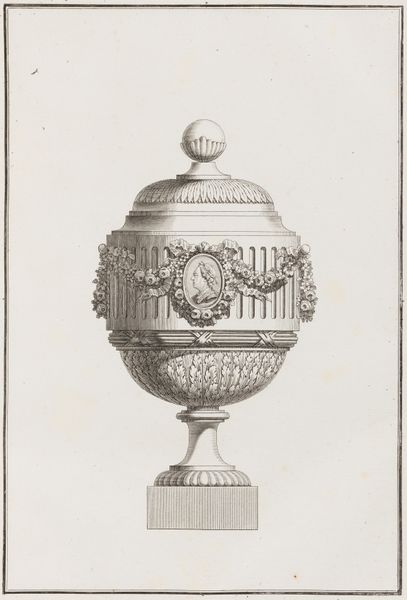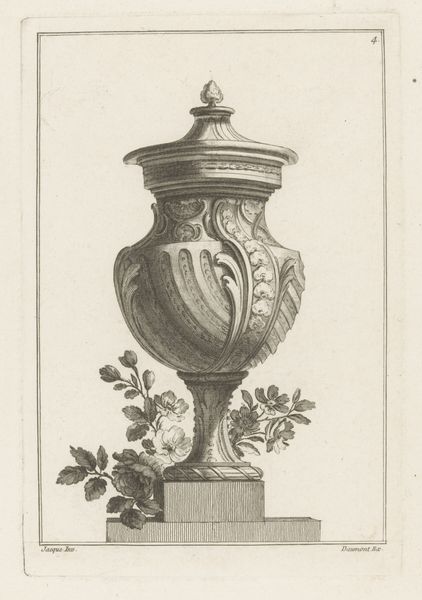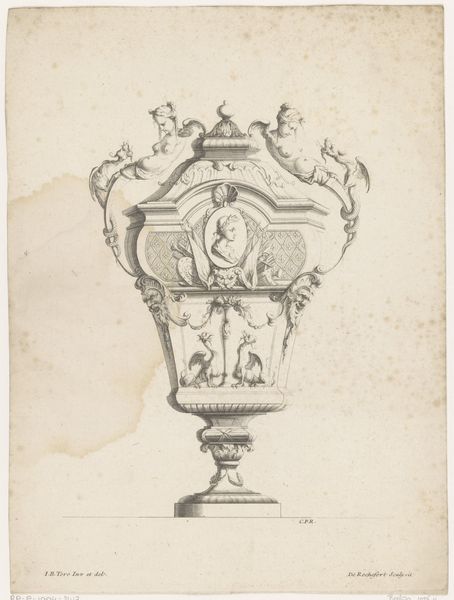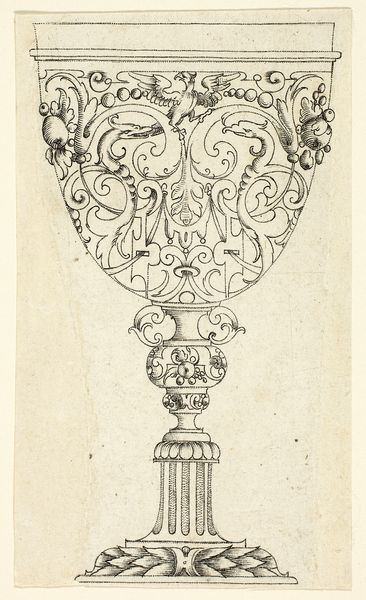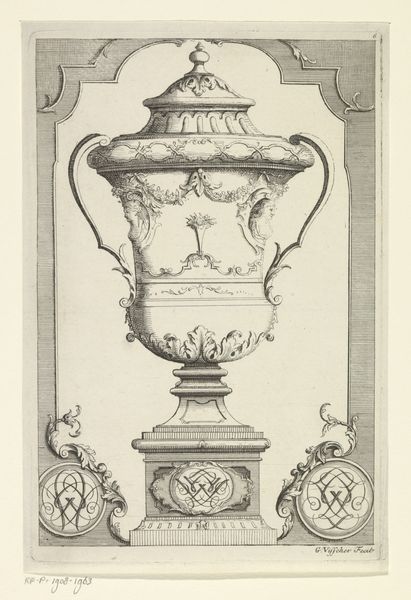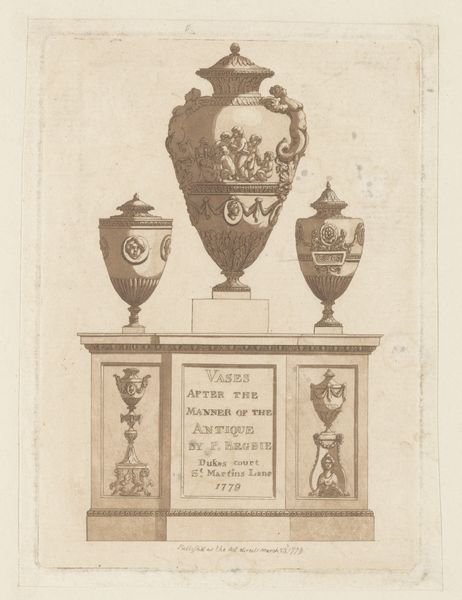
drawing, print, engraving
#
drawing
#
neoclacissism
# print
#
coloured pencil
#
engraving
Dimensions: 455 mm (height) x 276 mm (width) (bladmaal)
Johannes Bradt's drawing, made sometime in the 18th century, captures the essence of neoclassical design through precise lines and balanced composition. The vase, meticulously rendered, is a study in symmetry and proportion, evoking a sense of idealized beauty. The drawing, through its detailed depiction, becomes a signifier of the period’s fascination with classical forms and the intellectual pursuit of order. The medallion, centered on the vase, serves as a focal point, drawing the eye and suggesting a narrative or symbolic depth beyond mere decoration. The use of line in the drawing, especially in the rendering of garlands and ornamental details, presents a complex interplay of light and shadow, adding depth and texture to the otherwise flat surface. In its understated elegance, Bradt's "Vase med en Medaillon" speaks to the broader cultural values of the Enlightenment, where reason and harmony were pursued as ideals. The drawing invites us to consider the ways in which form can embody cultural values and how simple lines on paper can convey profound ideas about beauty, order, and human aspiration.
Comments
No comments
Be the first to comment and join the conversation on the ultimate creative platform.

